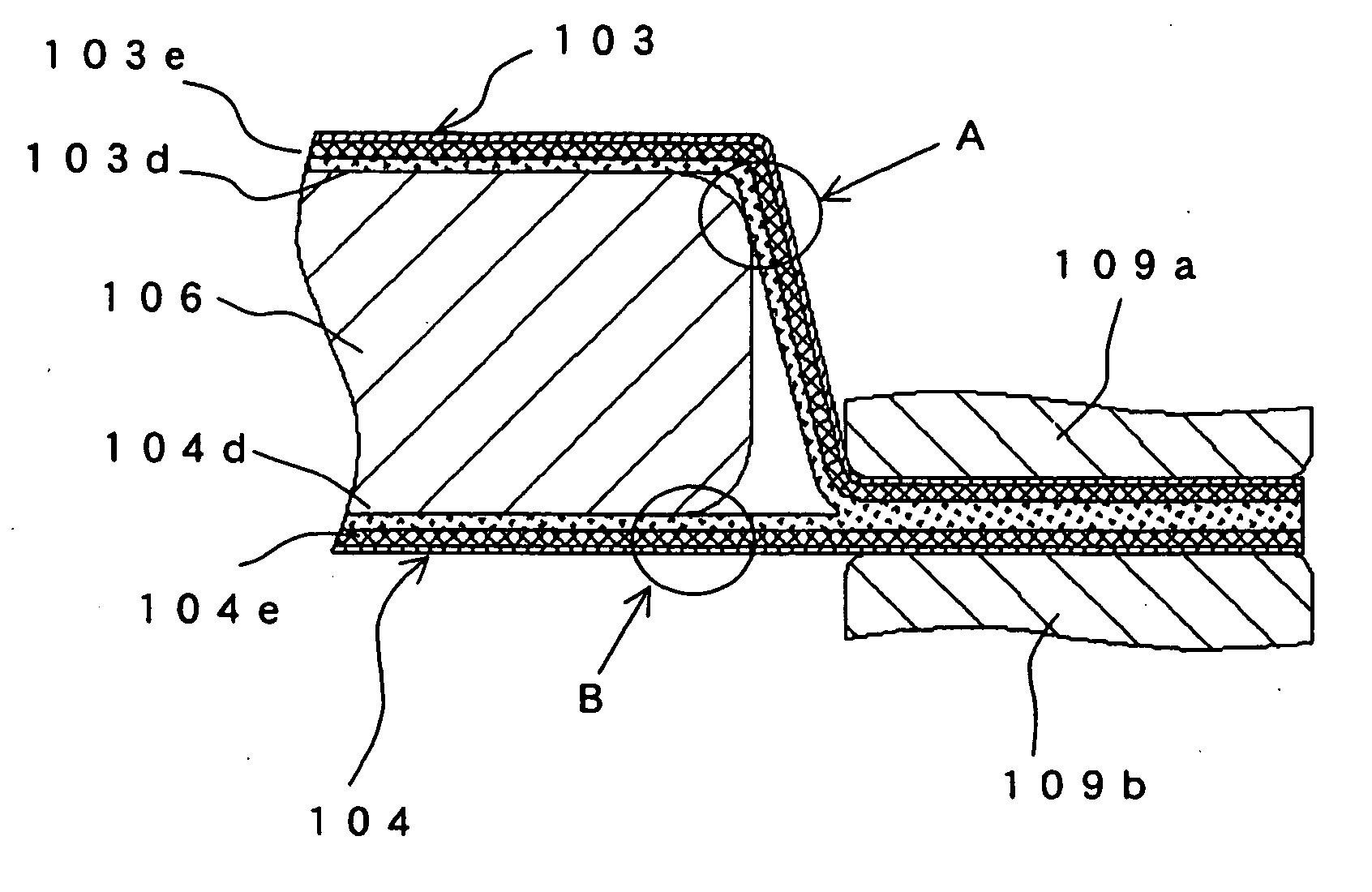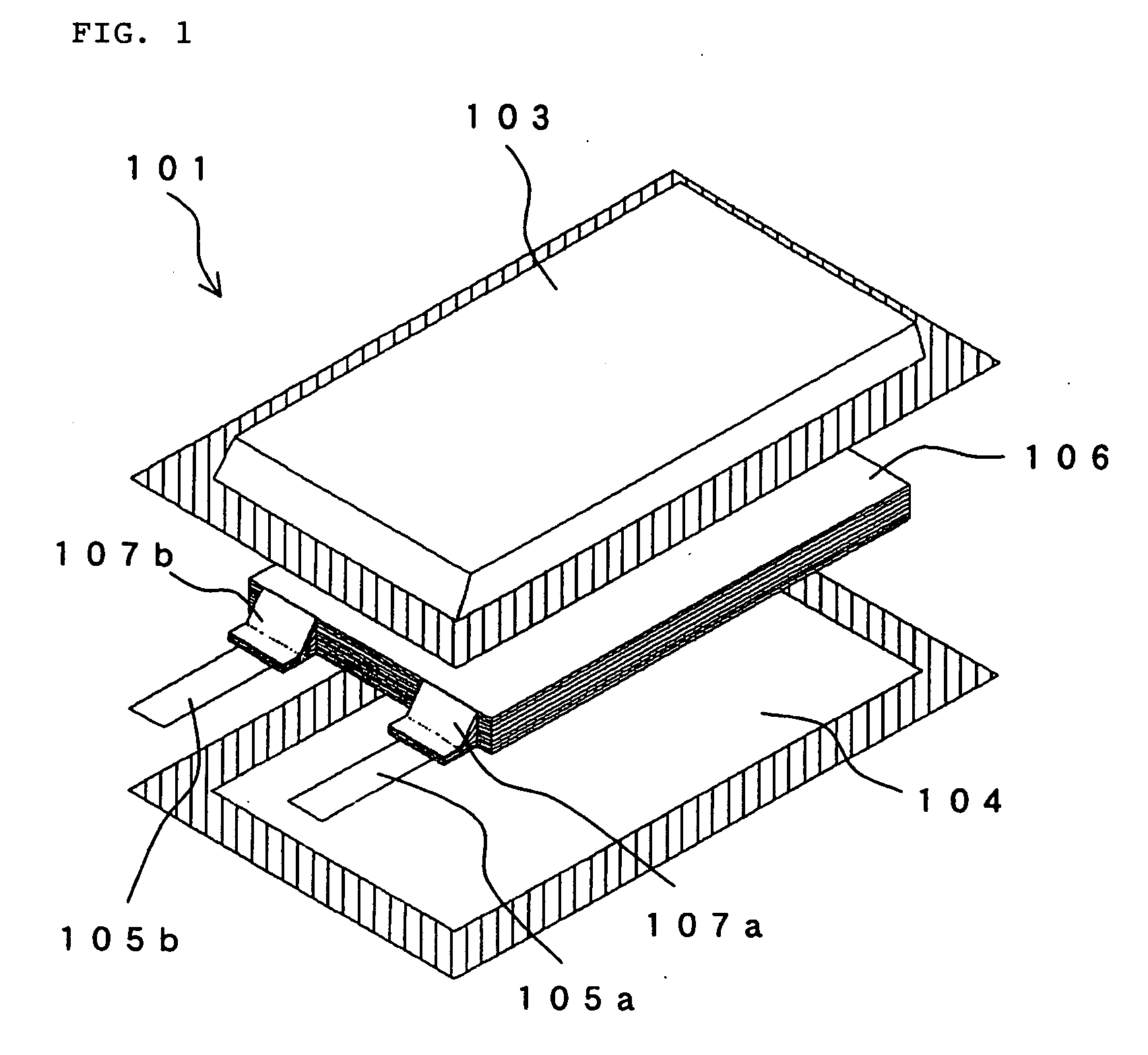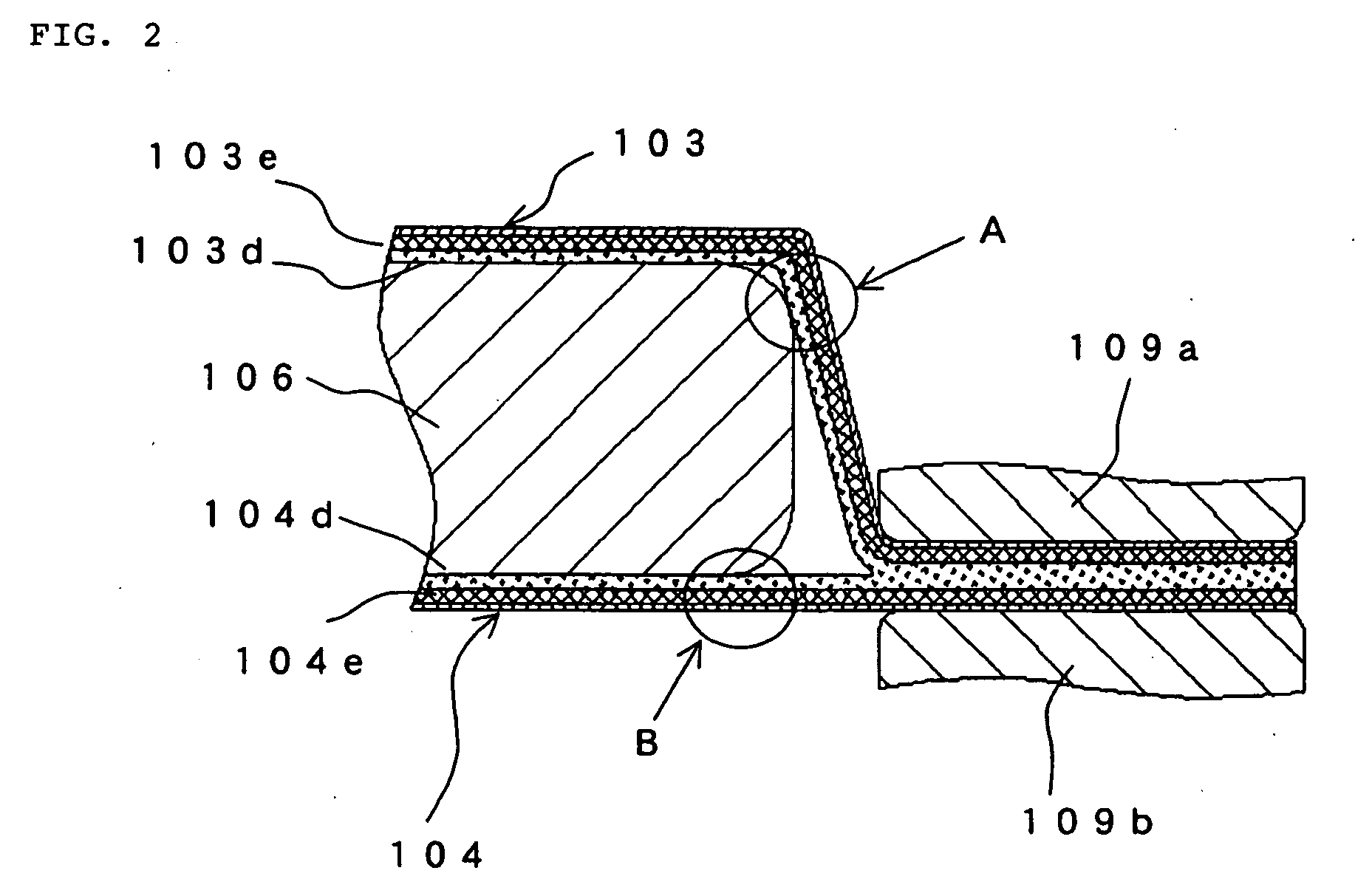Film-Covered Battery And Fabrication Method
a technology of film-covered batteries and fabrication methods, which is applied in the direction of cell components, sustainable manufacturing/processing, cell components, etc., can solve the problems of short-circuiting with metal foils, reduced thickness of heat-seal resin layers, and the arrangement of resins does not achieve the anticipated effect, so as to facilitate the selective formation of cross-linked structures, reduce battery performance, and high reliability
- Summary
- Abstract
- Description
- Claims
- Application Information
AI Technical Summary
Benefits of technology
Problems solved by technology
Method used
Image
Examples
Embodiment Construction
[0042] The following explanation regards an embodiment of the present invention with reference to the accompanying figures.
[0043] Referring to FIG. 3, an exploded view is shown of film-covered battery 1 according to an embodiment of the present invention. Film-covered battery 1 according to the present embodiment includes: battery element 6, positive electrode collector 7a and negative electrode collector 7b that are provided in battery element 6; an outer case for accommodating battery element 6 together with an electrolyte; positive electrode lead terminal 5a that is connected to positive electrode collector 7a; and negative electrode lead terminal 5b that is connected to negative electrode collector 7b.
[0044] Battery element 6 is made up from a plurality of positive electrode plates and a plurality of negative electrode plates, each of which is applied with an electrode material, that are alternately laminated with separators interposed. Each positive electrode plate and each n...
PUM
| Property | Measurement | Unit |
|---|---|---|
| temperature | aaaaa | aaaaa |
| melting point | aaaaa | aaaaa |
| area | aaaaa | aaaaa |
Abstract
Description
Claims
Application Information
 Login to View More
Login to View More - R&D
- Intellectual Property
- Life Sciences
- Materials
- Tech Scout
- Unparalleled Data Quality
- Higher Quality Content
- 60% Fewer Hallucinations
Browse by: Latest US Patents, China's latest patents, Technical Efficacy Thesaurus, Application Domain, Technology Topic, Popular Technical Reports.
© 2025 PatSnap. All rights reserved.Legal|Privacy policy|Modern Slavery Act Transparency Statement|Sitemap|About US| Contact US: help@patsnap.com



